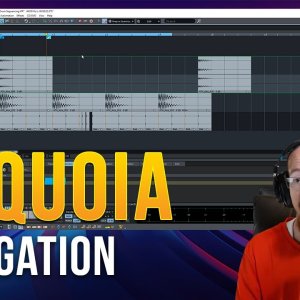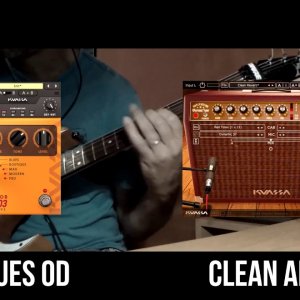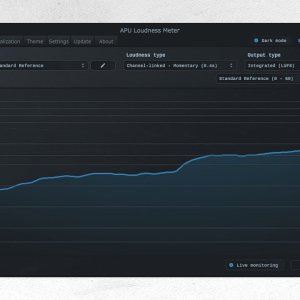sound engineering
-
B
What is the best way to mix an 808 and kick bass drum?
What is the optimal methodology for integrating kicks and 808s into a musical composition?- bringingjoy
- Thread
- arts and culture mixing music production myuuzik sound engineering umculo
- Replies: 5
- Forum: Myuuzik Q and A
-

Denise Audio has released the Motion Filter effect plugin
The "Motion Filter," by music production software plugin developer Denise Audio, offers various modes like low-pass, high-pass, band-pass, and notch with slopes up to 96 dB per octave. You can select between the classic Sweeper mode for envelope-driven sweeps or the new LFO mode for...- Munyaradzi Mafaro
- Thread
- add ons denise audio mumhanzi music production myuuzik plug-ins sound design sound engineering technology umculo
- Replies: 0
- Forum: Mumhanzi (Umculo)
-

Understanding hertz (Hz) in digital signal processing
Frequency, measured in Hertz (Hz), quantifies the rate of a cyclical phenomenon. In the context of digital signal processing, Hz is employed to characterize the properties of sound waves. For instance, a sound wave with a frequency of 1000 Hz undergoes 1000 cycles every second. Sampling rate...- Mpumelelo von Mumhanzi
- Resource
- audio post-production edikieshan mastering mixing mumhanzi myuuzik nalij ruzivo sound engineering umculo
- Category: riddim
-

WAVDSP has a new plugin called "WD Enhancer"
WAVDSP recently released their latest offering: a cutting-edge VST3, AU, and AAX digital audio effect designed for both Apple macOS and Microsoft Windows operating systems. Dubbed the "WD Enhancer," this music production software plugin promises to be one of your go-to audio processing SFX with...- Munyaradzi Mafaro
- Thread
- add ons macos mumhanzi music production myuuzik plug-ins sound engineering umculo wavdsp windows
- Replies: 0
- Forum: Mumhanzi (Umculo)
-
Magix Sequoia Pro 17 DAW navigation options
Eric Burgess explores the numerous navigation options in Magix Sequoia Pro, focusing on the major ones from hotkeys to snapping views to markers.- Tanonoka
- Media item
- add ons daws mastering mixing mumhanzi music production myuuzik sequoia sound engineering umculo
- Comments: 0
- Category: Myuuzik nyuuz
-
S
How high should the volume be to export for audio mastering?
What is the approximate level at which the master volume should be set in order to export for audio mastering?- Shellfish Lover
- Thread
- arts and culture audio post-production mastering mixing mumhanzi music production myuuzik sound engineering umculo
- Replies: 7
- Forum: Myuuzik Q and A
-
Kuassa OD3603 Overdrive
In the early days of electric guitars, players embraced the crunchy, saturated sound from pushing their amps to the limit, resulting in raw, sustained tones perfect for rock n' roll. This plugin offers five overdrive models: Blues, Boutique, Mad, Modern, and Pro.- Tanonoka
- Media item
- add ons kuassa mixing mumhanzi music production myuuzik plug-ins sound design sound engineering umculo
- Comments: 0
- Category: Myuuzik nyuuz
-

What are milliseconds?
The world runs on time, folks. Time is a concept we experience daily, from the slow crawl of hours to the fleeting rush of moments. But for scientists and engineers, measuring time with extreme precision is essential. A millisecond is a unit of time specifically designed to quantify very short...- Mpumelelo von Mumhanzi
- Resource
- arts and culture audio post-production edikieshan mastering mixing mumhanzi myuuzik nalij sound engineering umculo
- Category: riddim
-

Exploring the benefits of de-essers for audio mixing
De-essers are digital audio effect plugins (or pro audio signal processing hardware effects) used in many different things, like music production, audio treatment for podcasts, and even creating when audiobooks. They are meant to reduce the harsh "ess" or excess "sibilant" sounds that can...- Mpumelelo von Mumhanzi
- Resource
- add ons arts and culture mixing mumhanzi music production myuuzik plug-ins sound engineering umculo
- Category: myuuzik prodokshan
-
M
Moving audio tracks in Apple Logic Pro DAW?
How do I take audio tracks and channel strip settings including effects from one session and move them into another easily in Apple Logic Pro DAW?- Michaelideon
- Thread
- apple inc daws logic pro macos mixing mumhanzi music production myuuzik sound engineering umculo
- Replies: 5
- Forum: Myuuzik Q and A
-
S
Any tips for gain staging in music production software?
Does anyone have any gain staging tips and tricks when working with sound in music production software I could make use of?- Some Plantain
- Thread
- daws edikieshan mastering mixing mumhanzi music production myuuzik ruzivo sound engineering umculo
- Replies: 10
- Forum: Myuuzik Q and A
-
C
Should I mix to -6 dB? My tracks sound muddy at -7 LUFS
I don't understand why some people recommend mixing to -6 dB, because when I try to process tracks at -7 loudness units full scale, everything becomes very muddy, especially the bass.- claratheresa
- Thread
- audio post-production edikieshan mastering mixing mumhanzi music production myuuzik ruzivo sound engineering umculo
- Replies: 16
- Forum: Myuuzik Q and A
-

The K7D -Tape delay is now available in version 1.4.0.
Audio plugin software developer Imaginando has released an update for their time-based K7D Tape Delay Virtual Studio Technology effect, bringing it to version 1.4.0. The software's version 1.4.0 update also brings VST3 compatibility, ensuring it remains current with music industry standards and...- Munyaradzi Mafaro
- Thread
- add ons arts and culture imaginando mumhanzi music production myuuzik plug-ins sound engineering umculo
- Replies: 0
- Forum: Mumhanzi (Umculo)
-
APU Loudness Meter version 2.4.0
This APU Loudness Meter plugin update simplifies the user interface, fixes resizing issues, and makes the meter run smoother. It also resolves microphone access on macOS and ensures compatibility with more professional music recording software.- Tanonoka
- Media item
- add ons apu software audio post-production mastering mixing mumhanzi myuuzik plug-ins sound engineering umculo
- Comments: 0
- Category: Myuuzik nyuuz
-

Fuse Audio Labs releases "Dynamic Range Enhancer" for Mac and PC
Fuse Audio Labs—a music production software development outfit led by Reimund Dratwa—has just unveiled their latest plugin, the VCE-118 dynamic range enhancer. Available in VST2, VST3, AU, and AAX formats for both Apple macOS and Microsoft Windows, the new digital signal processing effect...- Munyaradzi Mafaro
- Thread
- add ons fuse audio labs macos mumhanzi music production plug-ins reimund dratwa sound engineering umculo windows
- Replies: 0
- Forum: Mumhanzi (Umculo)
-
T
What is a good dB level for vocals (or vox)?
What dB level should the vocals be at for mixing and mastering?- Trythanks Lightfoot
- Thread
- edikieshan mastering mixing mumhanzi music production myuuzik nalij ruzivo sound engineering umculo
- Replies: 14
- Forum: Myuuzik Q and A
-
D
Affordable master clock for DAW
To improve the clock stability and audio quality in my DAW, I'm looking to buy an external master clock. Currently, my RME Fireface 800 acts as the master clock. Any advice on affordable options that offer a noticeable improvement without breaking the bank?- Designer Brain
- Thread
- daws mumhanzi music production myuuzik sound engineering umculo
- Replies: 3
- Forum: Myuuzik Q and A
-
J
Patchbay balanced (TRS) or unbalanced (TS)
Is it better to use balanced (TRS) or unbalanced (TS) cables when using a pro audio patchbay?- Jay Guinness
- Thread
- edikieshan mixing mumhanzi music production myuuzik nalij ruzivo sound engineering umculo
- Replies: 4
- Forum: Myuuzik Q and A
-
J
SuperRack SoundGrid and Waves subscription
For anyone using Waves and SuperRack SoundGrid: If I have a subscription, can I use the plugins in my recording software and in the SuperRack software for live applications?- Jay Guinness
- Thread
- add ons mixing mumhanzi music production myuuzik nalij plug-ins sound engineering umculo waves audio
- Replies: 2
- Forum: Myuuzik Q and A
-
P
Stretch tracks in Pro Tools to delete sections?
How do I stretch my tracks in the Avid Pro Tools Edit window so I can delete smaller sections?- Phoenix
- Thread
- arts and culture avid technology edikieshan mixing mumhanzi myuuzik nalij pro tools sound engineering umculo
- Replies: 10
- Forum: Myuuzik Q and A



